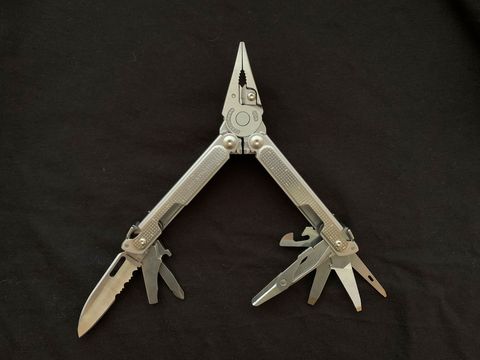
Among all the laws of military law, the SROE outlines military self defence as an extension to unit self-defense. The ICRC Commentary on Additional Protocols also mentions the concept of self defense. We have articles that answer questions regarding the legality, lawfulness and legality military self defense. We'll cover the basics and answer many common questions. Learn about the limitations and advantages of military self defense. You will then be well-prepared for self defense.
SROE defines Self-Defense as an extension and application of unit self Defense
The SROE or standard rules for engagement defines national or military self-defense as an extension or unit-based defense. The SROE was established to assist commanders in exercising national and international self-defense. However, national self defense has been confused with individual self protection under criminal law. This change occurred as the US entered several non-internationally armed conflicts. The US military was left with a complex and often contradictory self defense landscape.
A threat is defined as a person who demonstrates hostile intent. To trigger self-defense, a threat doesn't have to be immediate. Unlike criminal law and other legal systems, the SROE uses similar definitions for national, unit and individual self defense. The SROE also identifies a triggering event as a hostile or demonstrative of hostile intent.

ICRC Commentary on the Additional Protocols mentions self defense
According to the ICRC Commentary, the Additional Protocol, any hostilities participant must provide humane treatment to all civilians held in its custody. This includes the treatment of the wounded. The article prohibits the use of force against civilians and makes the treatment of hostages and prisoners of war subject to strict standards. Additionally, it stipulates that civilian attacks must be proportionate. This means that collateral damage or incidental injuries must not exceed any expected concrete and direct military benefit. Additionally, all targeting must be justified by reasonable expectations of civilian safety.
Articles in the Additional Protocols include provisions for civilian protection in a broader context. These provisions apply to structures such as bridges, power plants, chemical factories, and fuel storage depots. Some structures might be civilian-protected while others may not. A civilian-protected structure may be considered a civilian defense measure, despite not being mentioned in the ICRC Commentary to Additional Protocols.
ICRC Commentary
The ICRC has just issued an Interpretive Guidance on military self defense that would turn the nature of a cross-border conflict on whether or not the territorial state "consents" to the use of force. However, this Commentary also reveals a flaw. First, it isn't legally binding. State practices and agreements are the only way to create binding laws. The ICRC's tireless efforts as well as the expertise of its experts have resulted in Interpretive Guidance. This is a normative paradigm which outlines how to approach these situations.

Although the ICRC initially held that an armed attack by civilians on a territory of a nation does not necessarily mean that it is an act of aggression, the Commentary reveals that the 1958 interpretation was too restricting. Although the IAC doesn't stipulate that a state has to intervene in a war, it does not prohibit it from taking military action against civilians. The ICRC however believes that an armed war is when one state uses force to defeat another. This means that armed force must be used to protect civilians.
FAQ
Are you a cardio-exercise fan?
Cardiovascular exercise has many advantages. It improves blood flow, strengthens your heart muscle and increases stamina.
Cardiovascular exercise includes running, biking, hiking, swimming, tennis, basketball, soccer, volleyball, football, etc.
It is important to remember that cardio exercises should not be performed at high-intensity levels. This could result in injury.
Cardiovascular exercise should be done only if you feel well.
You should never push yourself beyond your limits. You could injure yourself if you do.
When you engage in cardiovascular exercise, it is best to warm up first. Gradually increase the intensity.
Listen to your body. If you feel pain, stop doing cardio exercise immediately.
Also, after a cardiovascular workout, it's advisable to take a rest. This allows your muscles to recuperate.
Cardiovascular exercise is an important part of losing weight.
It is the best method to lose calories and reduce belly weight.
What does butter do?
Butter is a great source of saturated fats. This type fat is great for your skin and hair. It also helps you build stronger bones.
Butter also contains vitaminK, which prevents bleeding after cuts and bruises. Vitamin K works together with vitamin C to prevent bruising.
Butter is rich in minerals such as calcium, potassium, and phosphorous. These minerals promote stronger bones, teeth, and teeth.
Butter has its limitations. Butter is high in cholesterol. Research has shown that high levels of cholesterol could increase your chances of developing cardiovascular disease.
Butter is also high-fat, which can contribute to obesity and increase cholesterol.
However, if you must have butter, try spreading it on bread rather than dipping it into soup or salad. Bread absorbs more oil that pasta and potatoes.
What is the best workout routine to build muscle?
When you are building muscle mass, there are two main exercises you need to do. These are the isolation exercises as well as compound movements. Isolation exercises target specific muscles while compound moves focus on multiple groups at once.
It is important to do exercises that work all of your major muscles groups. This ensures that each session is challenging.
To keep track of what you have done, use an app called MyFitnessPal. You can log everything, from calories burned to weight lifting. You can also create customized meal plans based upon your goals.
How many calories should you consume each day?
This can vary from person to person. The average is 2000 - 2500 calories per day. Based on your age, gender, height and activity level, you will need to calculate how many calories you require.
Do I have to do it every day?
No! No! That could mean walking fast enough for you to get slightly out of breath and biking hard enough for you to sweat.
Statistics
- The PRS enabled risk stratification for overall prostate cancer and lethal disease with a four-fold difference between men in the highest and lowest quartiles (HR, 4.32; 95% confidence interval [CI], 3.16-5.89). (pubmed.ncbi.nlm.nih.gov)
- By John Thompson Take a whopping 38% off a set of PowerBlock Pros. (menshealth.com)
- Are You One of the 20% of Guys (mh.co.za)
- An estimated calorie range for moderately active adult males falls between 2,200 to 2,800 calories per day, depending on age. (eatright.org)
- Cardmembers earn 5% Back at Amazon.com with a Prime Credit Card. (amazon.com)
External Links
How To
What should my diet look like before I start a workout?
Losing weight requires you to consume fewer calories than what you burn in exercise. All your nutrients must be consumed.
This includes protein, carbohydrates, fats, and vitamins.
You can do this by eating smaller meals throughout your day instead of three large ones.
You may not be as effective if there is too much hunger during your workouts.
You could try drinking water instead of energy drinks which contain caffeine and sugar. This helps keep you hydrated and energized.
Make sure to drink enough fluids. Drinking too much water could dilute the electrolytes in your system.
For proper functioning of your body, electrolytes are necessary.
If you don't have access to water, you could drink sports drinks. These drinks contain minerals such as sodium, potassium and calcium.
This helps replenish electrolytes that have been lost. These won't, however, replace the sweat you lose from exercising.
You can take multivitamin pills if you are concerned about salt loss during exercise.
These include extra vitaminB6, which regulates your body's sodium level.
If you don't know the salt content of your foods and beverages, supplements shouldn't be relied upon.
They aren’t regulated under the Food and Drug Administration.
Certain brands of sports drinks might contain more sodium than others.
Some sports drinks might contain artificial sweeteners, preservatives, or both. These additives could cause digestive issues.
If you are worried about too much salt, you could try sea salt.
It contains fewer chemicals then table salt.
Sea salt is also low in iodine, another mineral needed for healthy thyroid function.